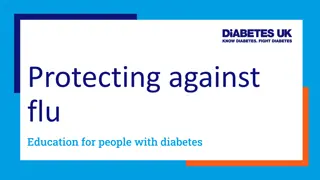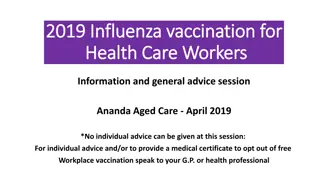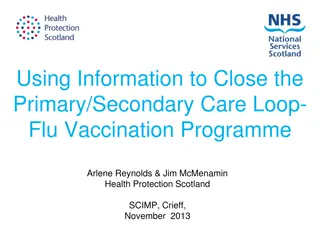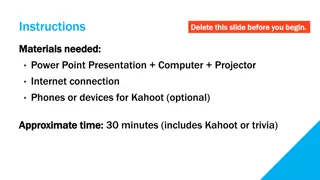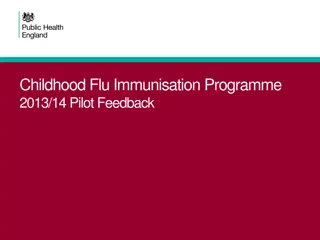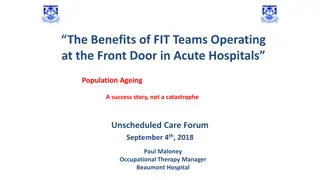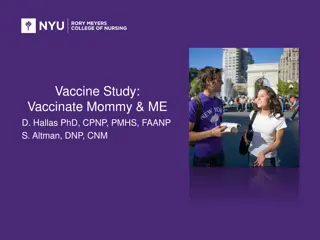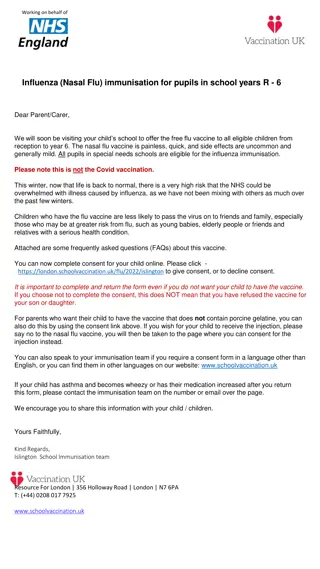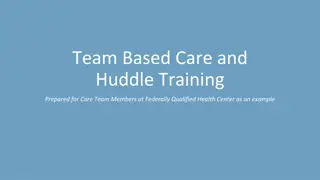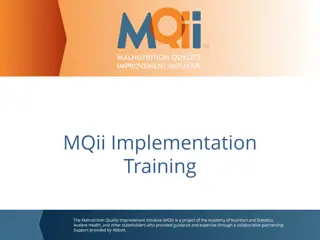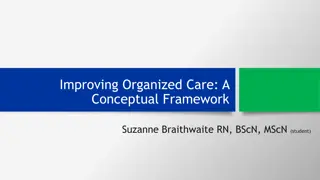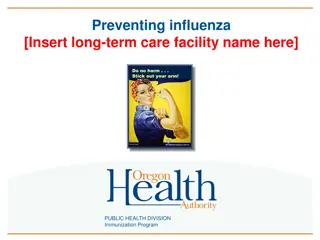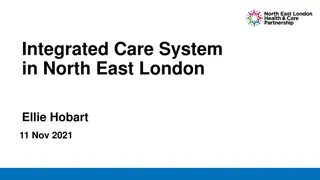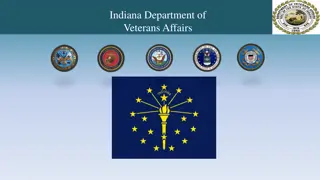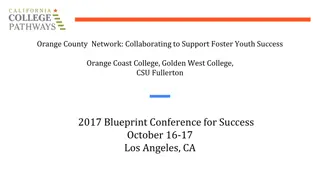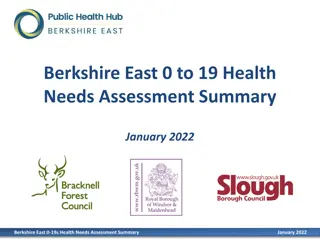Implementation of Flu-FIT Program for Patient Aligned Care Teams at East Orange VA
This study details the adaptation of the Flu-FIT Program to enhance colorectal cancer screening rates within patient aligned care teams at the Veterans Affairs (VA) Department. By linking influenza immunization with colorectal cancer screening using fecal immunochemical testing, the project aimed to increase screening rates above the national average. The methods involved training sessions for nurses, patient chart pre-screening, and strict eligibility criteria. Results showed a significant increase in FIT acceptance and colonoscopy completion, leading to an overall rise in colorectal cancer screening rates.
Download Presentation

Please find below an Image/Link to download the presentation.
The content on the website is provided AS IS for your information and personal use only. It may not be sold, licensed, or shared on other websites without obtaining consent from the author. Download presentation by click this link. If you encounter any issues during the download, it is possible that the publisher has removed the file from their server.
E N D
Presentation Transcript
Adaptation of the Flu-FIT Program for Patient Aligned Care Teams Sofia Funes, DO Claudia Flores, MS3, Amy Davidow, PhD Stephen Friedman, MD, Pearl Korenblit, MD, Pauline Thomas, MD
INTRODUCTION Colorectal cancer (CRC) deaths can be prevented with appropriate screening. Flu-FIT: a research-tested intervention program linking annual influenza immunization and colorectal cancer screening (CRCS) using a fecal immunochemical test (FIT). Currently the VA CRCS rate is 77%, they would like it to be higher, over the national VA rate of 82%. This is a second implementation of Flu-FIT as a quality improvement project for patient aligned care teams (PACT) at the US Department of Veterans Affairs (VA). Objective: Implement the Flu-FIT project at the East Orange VA, to increase annual CRCS rates above 82% in participating primary care Flu-FIT teams during the 2019-2020 influenza season
METHODS Six participating primary care clinics participated in the Flu-FIT project. Six other clinics were only monitored and CRCS rates compared. Training session for participating nurses: detailed scripts for offering CRCS and educating patients on CRCS options. Patient charts pre-screened monthly; list of eligible patients provided to nurses. Eligility Criteria Age: 50 - 75 y.o. No colonoscopy <10 yrs prior No FIT < 1 yr prior No recent rectal bleeding No Family History of CRC before age 60 Patient data and FIT completion: October 1, 2019 to April 15, 2020. VA protocol remained unchanged: Referral to colonoscopy for positive FIT Documentation and medical record reminder system.
DATA TABLES Table 1. Demographics Standard Care (n=267) Flu-FIT (n=242) Age mean (SD) Gender Male, no. (%) Female, no. (%) Race/Ethnicity, no. (%) Black or African American White Hispanic Other 65 (7.26) 66 (7.21) 225 (84.27) 42 (15.73) 231 (95.45) 11 (4.55) 140 (52.43) 87 (32.58) 12 (4.49) 28 (10.49) 139 (57.44) 58 (23.97) 17 (7.02) 28 (11.57)
RESULTS Table 2. Outcomes Standard Care (n=267) 193 (72.3) 51 (19.1) 26 (9.7) 50 (18.7) 6 (2.3) 163 (61.1) 32 (12) Flu-FIT (n=242) 175 (72.3) 88 (36.4) 36 (14.9) 48 (19.8) 15 (6.2) 135 (55.8) 51 (21.1) OR (95% CI) p 1.00 (0.68, 1.48) 2.42 (1.62, 3.62) 1.62 (0.95, 2.77) 1.07 (0.69, 1.67) 2.87 (1.09, 7.53) 0.81 (0.57, 1.15) 1.96 (1.21, 3.17) 0.99 Eligible for FIT Accepted FIT Completed FIT Prefers Colonoscopy Completed Colonoscopy Received Flu Vaccine CRCS Up-to-date <0.001 0.07 0.75 0.02 0.22 0.006
DISCUSSION Statistically significant increase in FIT acceptance and colonoscopy completion in clinics using Flu-Fit program Overall increase in CRCS rates with use of both FIT and colonoscopy from a 77% pre-intervention rate to: 81.9% in Flu-FIT group 79.8% for standard care group Limitations: Lack of randomization of the Flu-FIT and standard care patient groups Results not generalizable as project took place in an integrated healthcare system with unique patient population (Veterans) Implications for future projects Only 36 out of 88 patients accepting a FIT kit in study group completed the testing Project reach limited to the patients visiting the clinic during the influenza season, but protocols may be adapted to run year-round in future implementations
ACKNOWLEDGEMENTS Support for this project was provided to the Preventive Medicine Residency Program by the American Cancer Society Physician Training Award in Cancer Prevention and the East Orange VA Hospital. Special Thanks The Preventive Medicine Faculty: Dr. Thomas, Dr. Davidow, Dr. Friedman and Dr. Korenblit Medical Student Research Assistant: Claudia Flores The PACT nursing team that made this project possible: Nurse Vera, Resvelyn, Mary, Janice, Kim, Margarette, Mable, and Rudolfo
REFERENCES U.S. Cancer Statistics Working Group. U.S. Cancer Statistics Data Visualizations Tool, based on November 2017 submission data (1999-2015): U.S. Department of Health and Human Services, Centers for Disease Control and Prevention and National Cancer Institute; www.cdc.gov/cancer/dataviz, June 2018. Fight Colorectal Cancer. Fight Colorectal Cancer - Facts and Stats. 2018. October 2018 <https://fightcolorectalcancer.org/prevent/about-colorectal-cancer/facts-stats/>. US Preventive Services Task Force. Screening for Colorectal Cancer. US Preventive Services Task Force Recommendation Statement. JAMA. 2016;315(23):2564 2575. doi:10.1001/jama.2016.5989 Potter, Michael B, et al. Effectiveness and Reach of the FLU-FIT Project in an Integrated Health Care System: a Multisite Randomized Trial. American Journal of Public Health, vol. 103, no. 6, June 2013, pp. 1128 33, doi:10.2105/AJPH.2012.300998. Potter, Michael B., et al. The Effectiveness of the FLU FOBT Project in Primary Care: A Randomized Trial. American Journal of Preventive Medicine, vol. 41, no. 1, Elsevier Inc., 2011, pp. 9 16, doi:10.1016/j.amepre.2011.03.011. Ursin, G, et al. Colorectal Cancer Screening Pilot: Comparative Effectiveness Research Using Two Screening Modalities. Cancer Research, vol. 74, no. 19, AMER ASSOC CANCER RESEARCH, Oct. 2014, pp. 3242 3242, doi:10.1158/1538-7445.AM2014-3242.
REFERENCES Potter, Michael B, et al. The FLU-FIT Project: An Effective Colorectal Cancer Screening Project for High Volume Flu Shot Clinics. The American Journal of Managed Care, vol. 17, no. 8, 2011, pp. 577 83. Walsh, Judith M. E., et al. The FLU-FOBT Project in Community Clinics: Durable Benefits of a Randomized Controlled Trial. Health Education Research, vol. 27, no. 5, Oxford UniversityPress, Oct. 2012, pp. 886 94, doi:10.1093/her/cys063. Potter, Michael B, et al. Adaptation of the FLU-FOBT Project for a Primary Care Clinic Serving a Low-Income Chinese American Community: New Evidence of Effectiveness. Journal of HealthCare for the Poor and Underserved, vol. 22, no. 1, 2011, pp. 284 95, http://muse.jhu.edu/journals/journal_of_health_care_for_the_poor_and_underserved/v022/ 22.1.potter.html. Potter, Michael B, et al. Offering Annual Fecal Occult Blood Tests at Annual Flu Shot ClinicsIncreases Colorectal Cancer Screening Rates. Annals of Family Medicine, vol. 7, no. 1, 2009, pp.17 23, doi:10.1370/afm.934. Sofia, Funes, et. al. Adaptation of the Flu-FIT program for a primary care clinic serving militaryVeterans in East Orange, New Jersey. American College of Preventive Medicine 2019Conference, Poster Presentation.
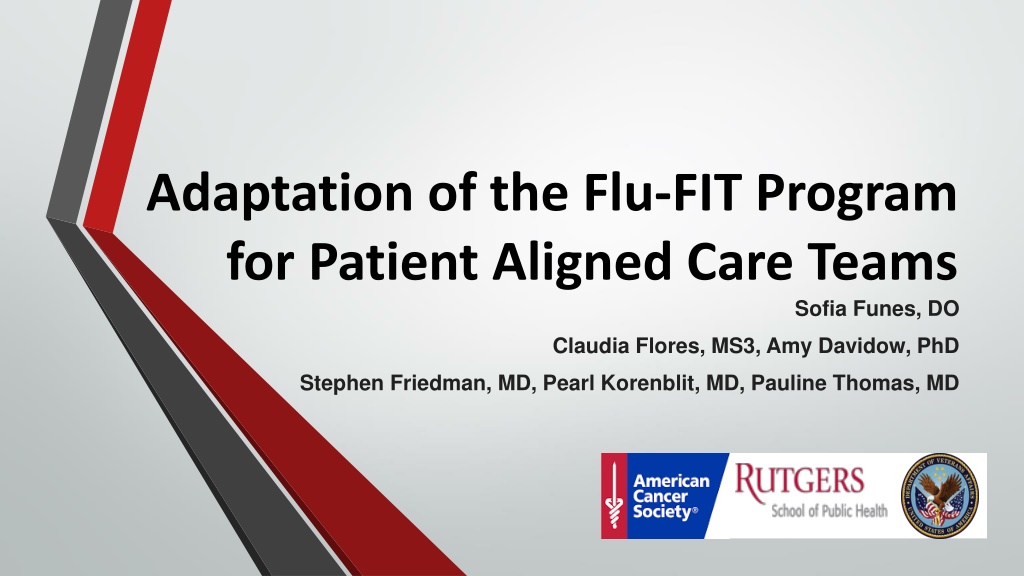


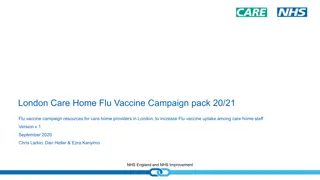
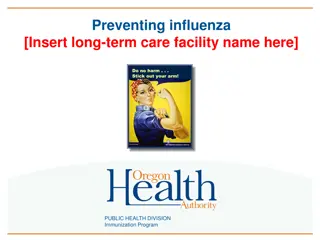

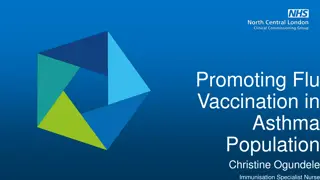
![Preventing Influenza at [Name of Critical Access Hospital]](/thumb/233818/preventing-influenza-at-name-of-critical-access-hospital.jpg)

